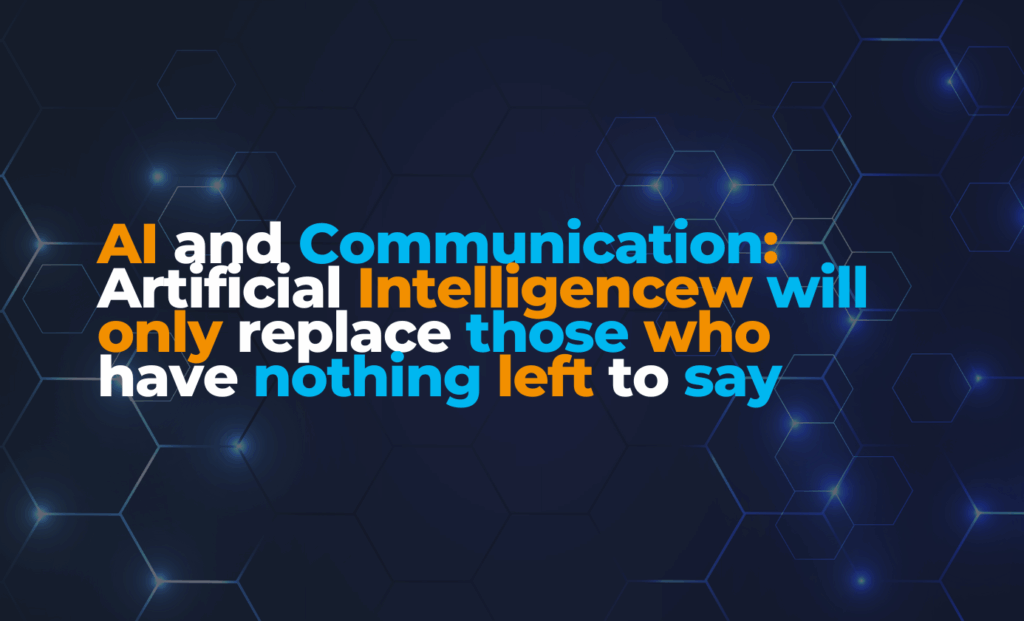
We Have Created an Alien Intelligence. And now, who will be the strategist to tell the stories?
by Massimo Romano
In my book Il potere invisibile delle idee, the cover shows eggs and bacon on a yellow background. This isn’t a graphic choice: it’s a statement of intent. It refers to one of the most brilliant PR campaigns of the twentieth century, conceived by Edward Bernays, the “nephew of Freud” who invented modern persuasion.
In the 1920s, Bernays was commissioned to increase bacon sales. He understood that he didn’t have to sell the product, but change a habit. He commissioned (and manipulated) a medical “study” that claimed the benefits of a hearty breakfast, gained the support of 5,000 doctors, and disseminated the news to newspapers as a scientific discovery. In a few months, America switched from coffee and toast to the eggs and bacon ritual.
Bernays didn’t hack a computer. He hacked trust, the most powerful operating system humanity has ever created.
Strategy and AI: Automation Forces Us to Think Better
We have entered the Fifth Communication Revolution: the one in which persuasion has become automated. What Bernays did in months, with intuition and a network of relationships, an algorithm does today in a few seconds. AI is not just a tool: it is the automation of persuasion.
The numbers confirm this:
- 79% of managers state that AI already influences their marketing strategies (Harvard Business Review).
- 64% of communicators use it to write content or analyze trends (Muck Rack).
- Only 12% of companies have defined an ethical protocol for managing it (KPMG).
- And according to Gartner, by the end of 2026, over 60% of marketing budgets will be allocated to strategic consulting services, not operational production.
We are multiplying Bernays’ power without asking ourselves who is holding the strings. Yet, AI is not an enemy: it is a dividing line. It will separate those who produce noise from those who create meaning.
AI will not replace communicators. It will replace those who no longer have anything to say.
Because the machine can write a press release, but it cannot decide if it is worth saying. It can generate content, but not build strategies. And strategy is what distinguishes an executor from a consultant.
The future of agencies is not to produce more, but to think better. To return to being what the best have always been: strategists of influence and not post factories.
AI will force us to return to where it all began: strategic consulting. It will take away the shortcut of “doing” and oblige us to return to “thinking.” From content providers to thought consultants. Anyone can write on behalf of a brand, even a machine.
The real challenge will be for those who know how to guide brands to choose what is worth saying, and why. And that is where we will return to play our game: in the territory of strategy, vision, and judgment.
Algorithmic Propaganda: The Danger Is Not the Lie, But Plausibility
Bernays knew it well: every idea can serve freedom or power. In the 1950s, working for the United Fruit Company, he orchestrated a campaign that painted the democratic president of Guatemala, Jacobo Arbenz, as a communist threat. His propaganda was so effective that it pushed the United States to support a coup d’état. From a breakfast, to a civil war.
Today, that same manipulation would require just a few clicks. AI hallucinations, false but plausible information, are the automated version of that propaganda. The Cambridge Analytica case was just the trailer for a movie we have already started filming: algorithmic propaganda, invisible and personalized.
It is no longer the lie that is dangerous, but plausibility. And in the noise generated by millions of artificial messages, the risk is that truth becomes a minority opinion.
Ivy Lee 2.0: The Communicator as Strategic Guide and Builder of Trust
Paradoxically, the answer to the AI challenge is not found in the future, but in the past. At the dawn of PR, while Bernays was manipulating the masses, Ivy Lee wrote the first Declaration of Principles of the profession:
“The public has a right to truthful and accurate information.”
He was the first to understand that transparency is a more powerful form of influence than manipulation.
Today, in the era of persuasive machines, our profession must return there: to ethics and strategy. AI can write, analyze, predict. But it cannot choose. And choice is the most human dimension of thought.
The communicator of the future will be an Ivy Lee 2.0, with three missions:
- Architect of strategy → AI is an executor. It needs a vision. Our job is to ask the right questions, define the “why” before the “how.”
- Guardian of ethics → AI has no morals: it reflects ours. The communicator must be its human filter, educating it on values, inclusion, and responsibility.
- Builder of trust → In a world of synthetic content, authenticity will be the rarest currency. As Al Golin taught with his TrustBank, trust is built only with time, consistency, and humanity.
Perhaps the greatest opportunity of Artificial Intelligence is not to make us work better, but to force us to think again. When everything can be written by a machine, what truly matters is the truth you choose to tell.
The Hen That Clucks the Loudest
Henry Ford used to say:
“Ducks lay their eggs in silence, hens cluck like crazy. And the world eats hen’s eggs.”
AI is the loudest hen humanity has ever invented: it produces non-stop, 24 hours a day, in every language and format.
Our job is not to make it cluck more, but to teach it when to be silent. Because even silence, at times, is a form of conscious communication. And because technology can automate communication, but only awareness can save its meaning.
Massimo Romano is an entrepreneur, communicator, and journalist, CEO and co-founder of Spencer & Lewis, an independent communication group with offices in Rome, Milan, and London. For over twenty years, he has worked alongside Italian and international companies, focusing on integrated communication strategies, brand reputation, and public relations. Active in the sector debate, he is a board member of UNA – Aziende della Comunicazione Unite and vice president of the Publishing, Information, and Audiovisual section of Unindustria.






